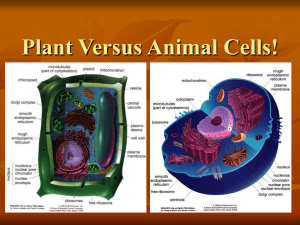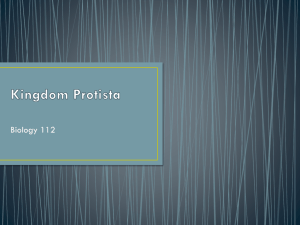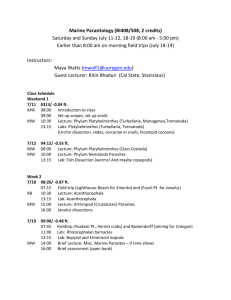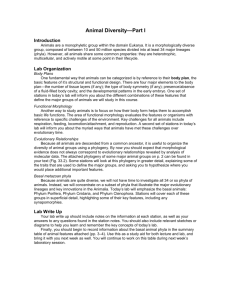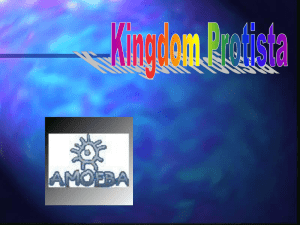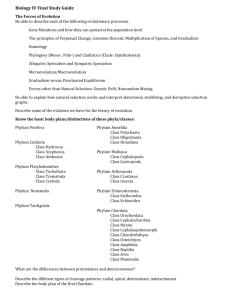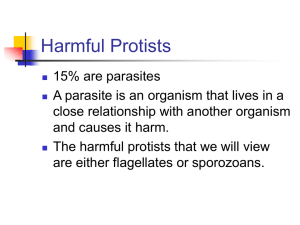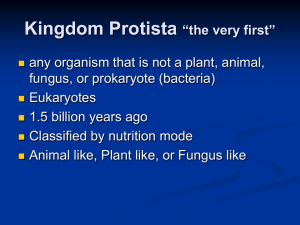Unit 3 –Notes #1 Animal-Like Protists (PROTOZOANS)
advertisement
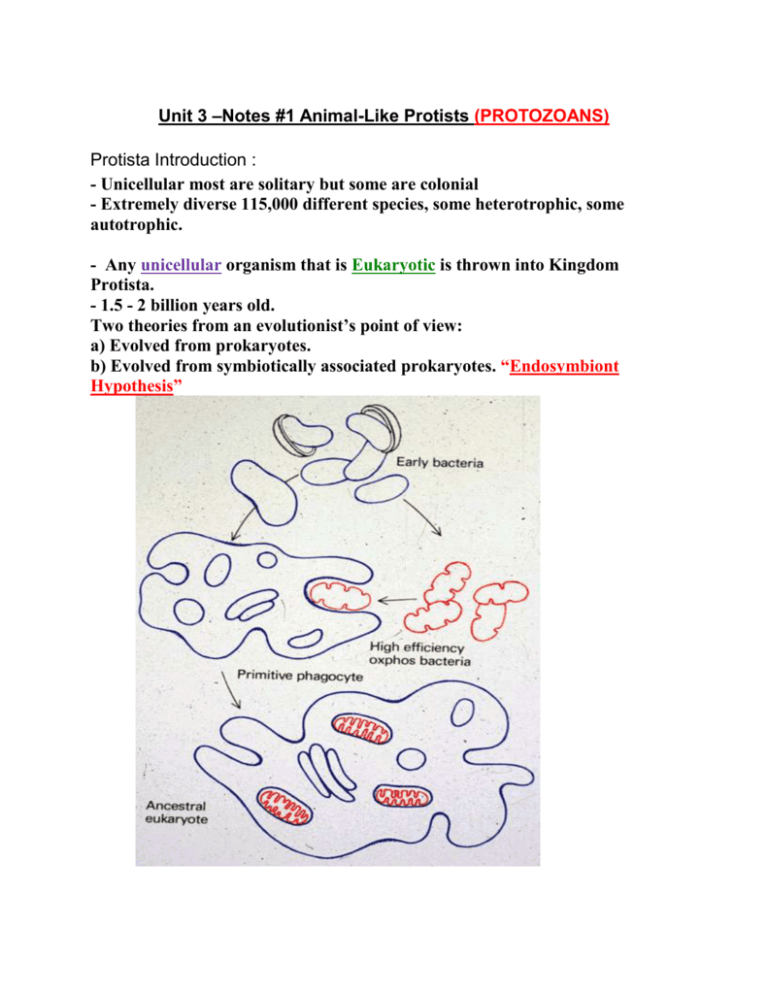
Unit 3 –Notes #1 Animal-Like Protists (PROTOZOANS) Protista Introduction : - Unicellular most are solitary but some are colonial - Extremely diverse 115,000 different species, some heterotrophic, some autotrophic. - Any unicellular organism that is Eukaryotic is thrown into Kingdom Protista. - 1.5 - 2 billion years old. Two theories from an evolutionist’s point of view: a) Evolved from prokaryotes. b) Evolved from symbiotically associated prokaryotes. “Endosymbiont Hypothesis” FUNGUS LIKE 2 Phyla 2 Phyla 3 A) Animal-Like Phyla (Protozoans) - Classified into 4 smaller groups based on movement: 1) Ciliates Move by cilia 2) Flagellates Move by flagella 3) Amoeboid Extend cytoplasmic bodies in one direction 4) Sporozoans No movement 1. Phylum - CILIOPHORA (Ciliates) - Contain cilia (short hair-like appendages) for movement. - Free living - Filter feeders or hunters - Example: Paramecium Functions of Parts: - Pellicle: made up of cell membrane and associated underlying structures. - Trichocysts: spiny projections used for defense. - Macronucleus and Micronucleus: genetic information - Gullet/Oral Groove: brings food from the outside to the inside: (mouth) - Food Vacuoles: Membrane enclosed vacuole, which contains food. - Anal Pore: Where wastes are emptied - Contractile Vacuole: Star-shaped, Removes excess water to prevent bursting of cell. - Cilia: Moves the protists as well as brings food to the gullet. - Lysosome: Contain enzymes that help digest food particles. Fuse with the food vacuole. - Most of the time they will reproduce asexually by Binary Fission, but under harsh conditions they will sexually reproduce by Conjugation. 2. Phylum - ZOOMASTIGINA (Flagellates) - Also known as Phylum “Mastigophora” - Use flagella - Absorb food through their cell membrane. - Reproduce by binary fission or by meiotically producing haploid gametes. - Some are parasitic. - Examples : Giardia (Gastro-intestinal trouble) and Trichomonas (Venereal Disease) Giardia: 3. Phylum – SPOROZOA (spore producing) - Do not move (non-motile). - Reproduce by spores - Most are parasitic and cause disease in other organisms. - Example : Plasmodium vivax, carried by Anopholes Mosquito. Forms spores in mosquito, then passed into humans. Parasite then infects human blood and liver cells causing them to lyse and release toxins. “Malaria”. 4. Phylum – SARCODINA (Sarcode-Jelly) - Pseudopods for movement and feeding -Most common family : Amoebae - Engulf food with pseudopods : Phagocytosis - NO cell wall, flagella or cilia, possess contractile vacuole to pump out excess water. - Reproduce asexually binary fission. - Other groups include Radiolarans, Foraminifers and Heliozoans. - Foraminifers secrete shells of calcium carbonate (CaCO3 chalk), form thick deposits at bottom of ocean. LIVING WITH ANIMAL-LIKE PROTISTS a. Harmful Relationships: i) Plasmodium vivax Malaria ii) Members of Genus Trypanosoma of Zoomastigina cause a number of diseases: Ex #1. African Sleeping Disease : Tsetse fly carries parasite. Infection leads to chills, fever, and rash. Parasite attacks nervous system leading to unconsciousness and even death. Ex. #2 Chagas Disease : Parasite Trypanasoma cruzi attacks muscle cells including those of the heart causing heart (cardiac) failure. iii) Sarcodinans - Some “entamoeba” cause amoebic dysentery results in severe bleeding and bloody diarrhea. b) Helpful Relationships. i) Zoomastiginan – Trychonympha found in the gut of both the termite and the wood roach. Have the enzymes that allow for the digestion of cellulose. Animals by themselves do not have the correct enzyme to digest cellulose. Recycle dead wood into nutrient cycle. ii) Many zooplankton (any microscopic floating animal) play a crucial role in aquatic food webs.
